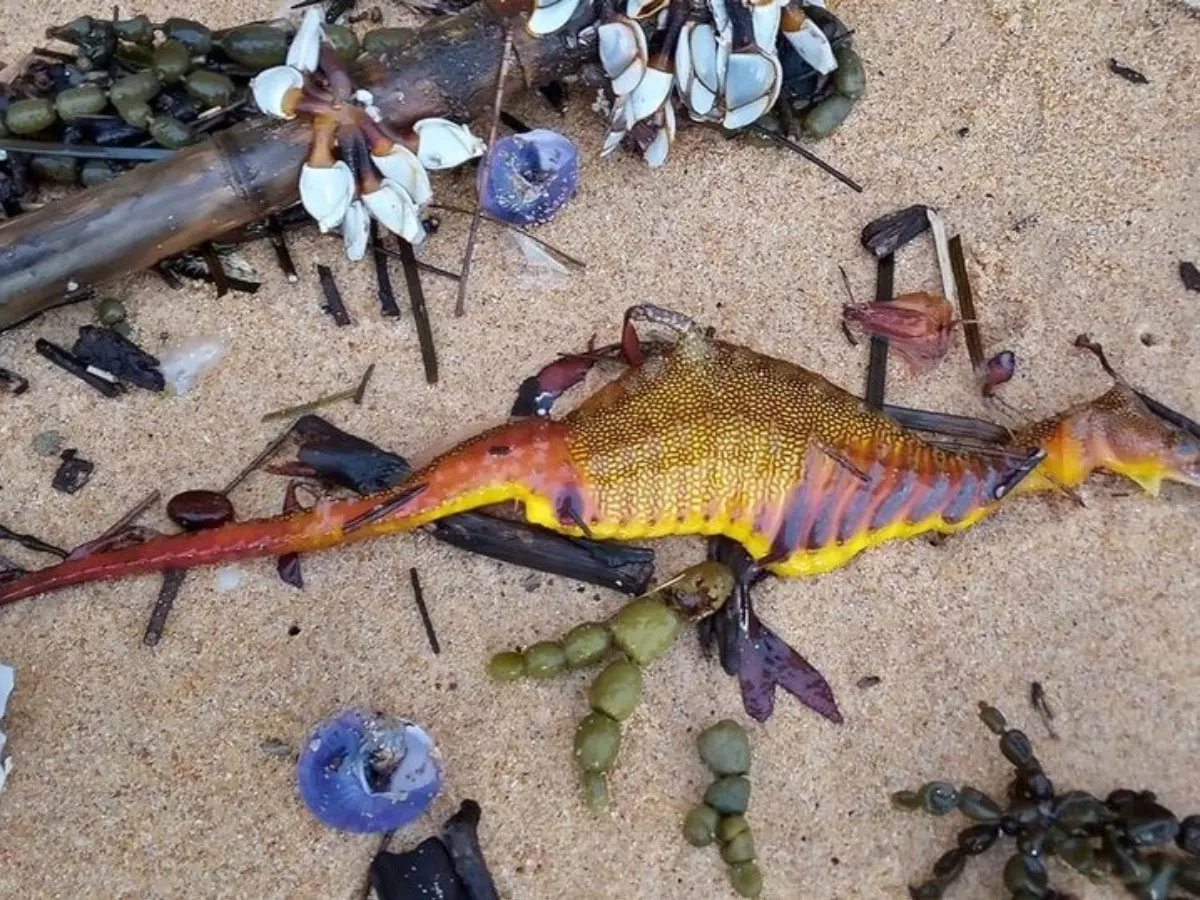Beachgoers See A Shocking Number Of Weedy Seadragons Washed Up On Sydney Beaches
Sydney beachgoers reported a massive jump in washed-up weedy seadragons. Weedy seadragons are only found along Australia's eastern and southern coasts.

Following record-breaking rainfall, beachgoers in Australia are noticing dozens of unusual and vibrant creatures showing up on the beaches.
These unusual creatures also known as weedy seadragons have been spotted in Cronulla, Malabar and the Central Coast and they are thought to be 10 times the amount of normal wash-ups to hit the beaches.
Professor of marine ecology at the University of Technology Sydney, Dr David Booth told the Sydney Morning Herald: ¡°Clearly it¡¯s a result of some combination of the shocking weather, pollutants being washed into the ocean and big surf."
 Betty Ratcliffe/ Facebook
Betty Ratcliffe/ Facebook
Weedy seadragons are also known as common seadragons. They are only found in Australia along the east and south coasts. The small, leaf-shaped relatives of the seahorse don't tend to move much in their lifetime, only straying up to 50m from their homes.
So, it is a massive surprise that they have strayed so far.
¡°This can make them susceptible to loss of habitat and changing environmental factors," added lead investigator Dr Selma Klanten.
They are quite popular with divers due to their vibrant features, colours and unusual shapes.
 Betty Ratcliffe/ Facebook
Betty Ratcliffe/ Facebook
Dr Booth is concerned northern populations are declining and the dragons will relocate down the coast to cooler waters due to climate change. "At Kurnell, Botany Bay, there might've been seven to eight you'd see in a dive; now there's two to three," he said.
He identifies and tracks weedy seadragons through the help of hobby divers and artificial intelligence. He uses advanced software so that he is able to identify individual weedy dragons based on their unique pattern and colours.
Even though it is illegal to handle the body of a weedy seadragon, Dr Booth has asked anyone who discovers one to send a photo to help with his research.
These weedy sea dragons are described as 'tough little devils' for their ability to hold onto kelp during strong currents, but their homebody tendencies put them at risk during storms.
 Betty Radcliffe/ Facebook
Betty Radcliffe/ Facebook
The species were once listed as 'threatened species' on the International Union for Conservation of Nature¡¯s Red List of Threatened Species before they were ranked down in 2019 to 'least concern.'
Several unusual sea creatures are being washed up on the beaches of Australia. Recently, a sea creature with a human mouth like structure was spotted by a beachgoer.
H/T: The Sydney Morning Herald
For the latest from trending, click here.
